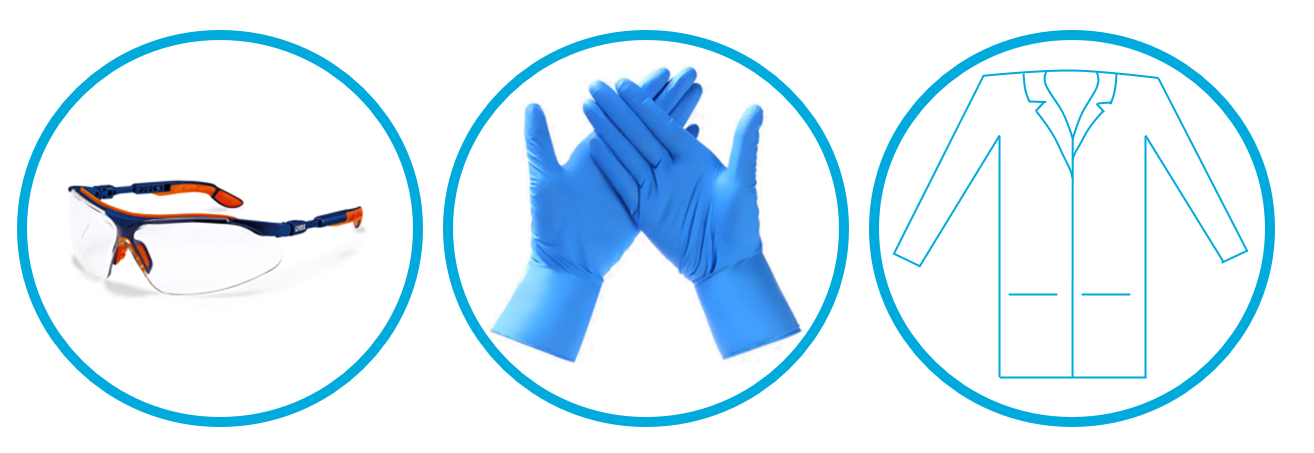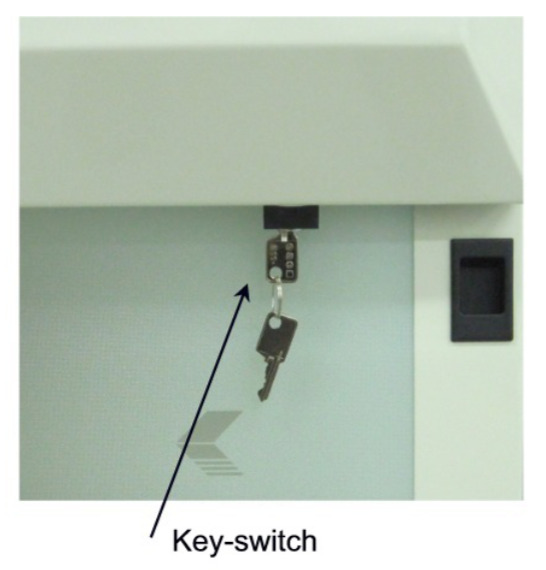Biosafety Cabinets: good practices#
To ensure a good work quality in a sterile and safe environment, it is essential to know how to work in a BSC and what are the best practices.
We created 2 short videos that show the best practices for working with cell cultures in a BSC at LCSB.
If you have any issue with a BSC, please send a ticket to the Support Team.
If you are not sure a BSC is the right hood to use for your experiment, please check the How-to Card related to the different types of hoods or contact the LCSB safety officer.
In case of spill in a BSC, please refer to the respective How-to Card.
Recommendations#
- The user must wear safety glasses, gloves and a BSL2 lab coat while using a BSC.

Be aware that UV-lights act only on surfaces exposed to them, the surfaces in the shadow are not disinfected and a chemical disinfection is still necessary after a UV decontamination. UV lights are damaging plastic material and give a false feeling of disinfection while not being 100% efficient. Because of this, we do not recommend the usage of UV lights and advise to prefer the usage of disinfectants.
The BSC must be decontaminated before and after each use. The interior surfaces should be wiped with an appropriate disinfectant that kills any microorganism that could be found in the cabinet. Check out the list of recommended disinfectants. Do not use non-sterile paper towels.
The BSC should be empty when you start working. If material is stored inside the BSC (for instance micropipettes), they must be disinfected when you switch on the BSC.
Regularly wipe the inside walls, below the work surface and the collecting pan:

After switching on the cabinet, allow it to run until it is ready before starting to work inside.
Your hands and all the materials that enter in the BSC must be decontaminated.
Put the recommended disinfectant in the aspiration pump and disinfect the pump tubing with Ethanol 70%.
Control the cells under the microscope before starting to work to detect contamination in your cell culture (change in the medium color, cloudiness of the medium, cross-contamination with other cell lines, …).
Plan your work: set up workspace in a direction from clean to dirty.

Never cover the front or rear grids with any material, even temporarily.
Avoid movement of materials or excessive movement of hands and arms through the front access opening during use. After entering, allow the cabinet to stabilize before resuming work.
Work inside the BSC at a minimum distance of 10cm behind the front grids.
Take care not to pass with your hands over open bottles, lids, flasks or tip boxes.
When you open a flask or a medium, you can place the lid with the opening up or down on the bench, but make sure you put it outside your working area, at the back of the BSC so you do not pass over it with your hands or arms.
Close open bottles, flask, falcons, tips boxes immediately after use.
Remove your waste as soon as you have finish your work.
When work is completed, clear the workspace and disinfect the space. Please refer to the Chemical and Biological Waste Management.
Switch off the BioSafety Cabinet. Lower the glass and turn off the main Key-Switch if you are the last user of the day.

UV lights#
Some of the biosafety cabinets are equipped with UV lights. You may want to turn them on or to ask to install UV lights on your cabinet. Please note that we do not recommend the usage of UV lights in biosafety cabinets. The efficiency of UV lights in a Biosafety cabinet is very limited. Everything in the shadow of a tips box, pipette holder,… will not receive any photon from the UV. The surfaces below the worktop of the biosafety cabinet are also in the shadow.
Among the additional reasons why we do not recommend UV lights:
- UV lights efficiency decreases with the square of the distance, making it inefficient where it would be the more interesting to have it.
- UV lights efficiency decreases with the age of the light bulbs.
- UV lights affect plastics lifetime and may damage items left in the Biosafety cabinet
- Dust and dirt protect “bugs” from UV light. => UV lights cannot replace cleaning and disinfection.
Questions?#
Do you experience any contamination issues? Check out our How-to Card about contaminations in cell cultures.
Or you have doubts about good practices in your laboratory setup, create a ticket to get in touch with our biosafety/quality officers that can help you to review your procedures and look at the laboratory setup.